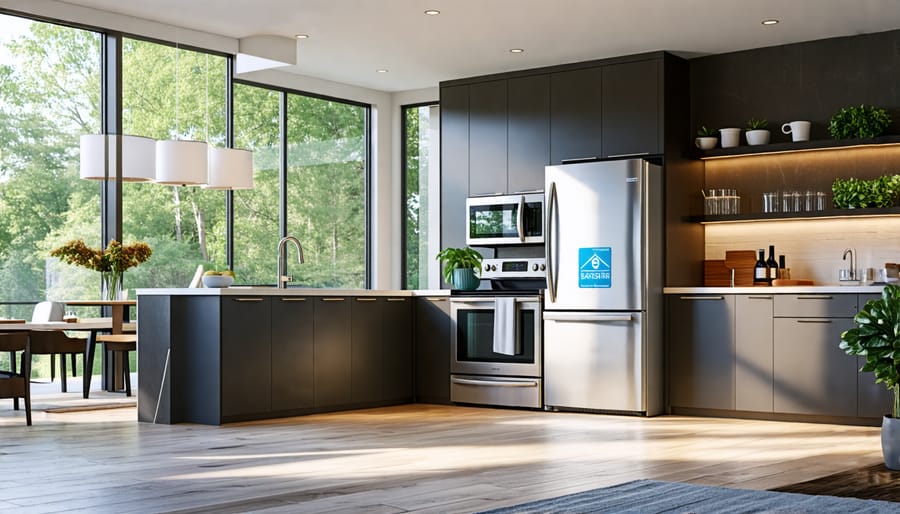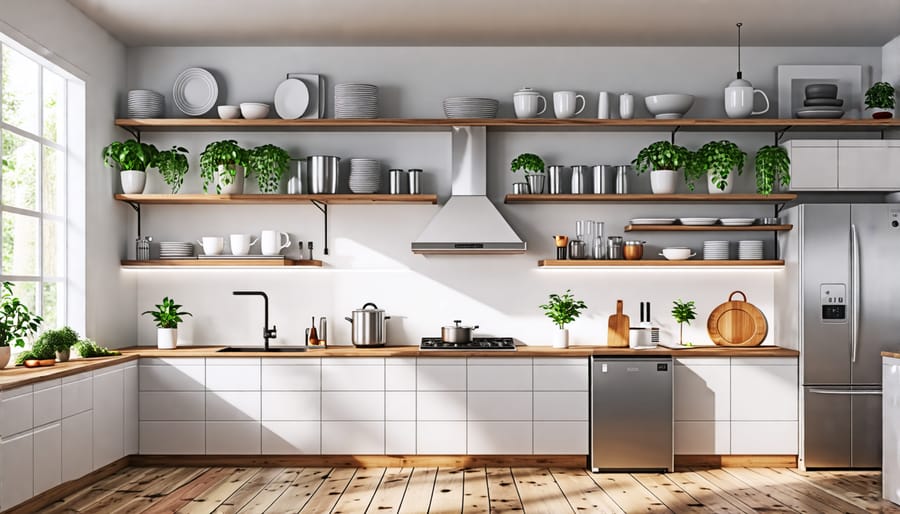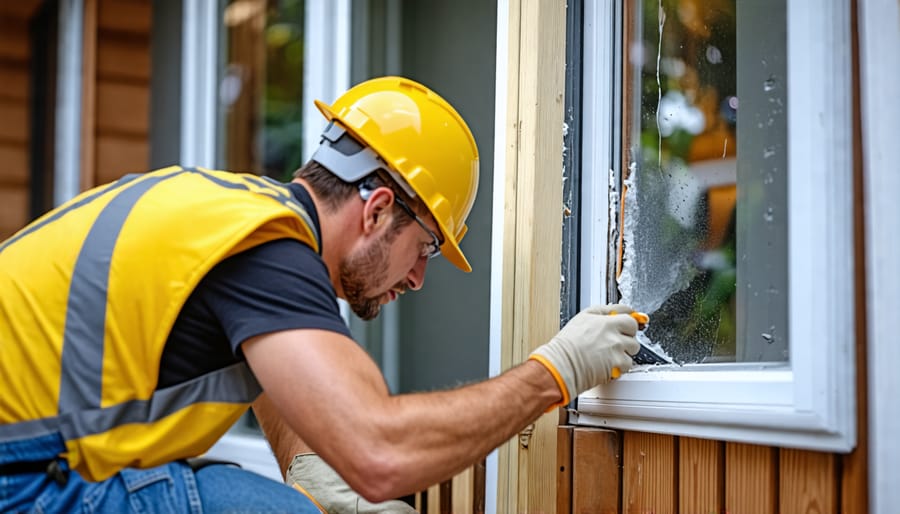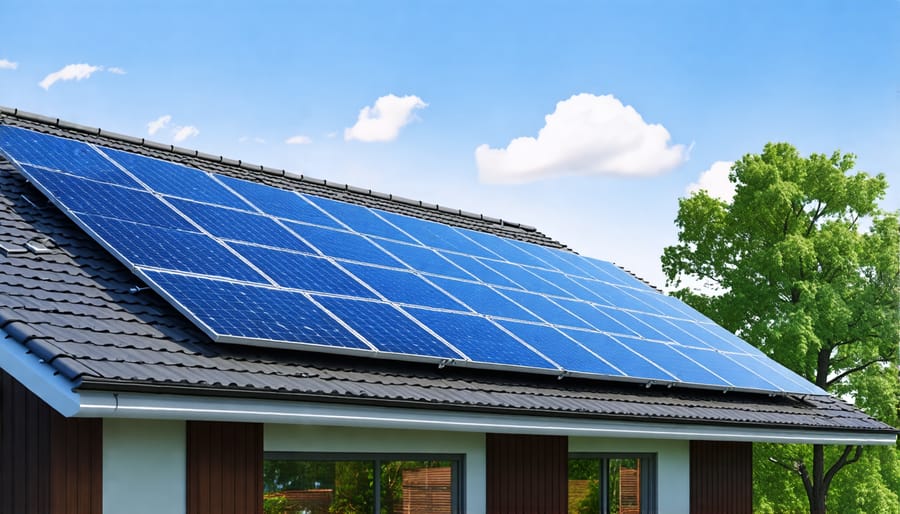
Slash Your Energy Bills With These 10 Smart Home Upgrades
Upgrade to energy-efficient appliances that carry the ENERGY STAR label, which can slash your utility bills by up to 30%. Install a smart thermostat to automatically adjust your home’s temperature based on your schedule and preferences, potentially saving you hundreds of dollars annually on heating and cooling costs. Invest in energy saving solutions like LED light bulbs, which use up to 90% less energy than traditional incandescent bulbs and can last up to 25 times longer. Seal air leaks around windows, doors, and other openings to prevent drafts and maintain a comfortable indoor temperature, which can reduce your energy consumption by up to 20%.
Switch to Energy Star Certified Appliances
Upgrading to Energy Star certified appliances is one of the smartest decisions you can make for your home and the environment. Energy Star is a government-backed program that sets strict energy efficiency standards for appliances, helping consumers save money on utility bills while reducing their carbon footprint. When shopping for new appliances like refrigerators, dishwashers, washing machines, and dryers, look for the Energy Star label to ensure you’re getting a product that meets these rigorous standards.
Energy Star certified appliances often use 10-50% less energy than standard models, which translates to significant savings over the lifespan of the appliance. For example, an Energy Star certified refrigerator can save you over $200 in energy costs compared to a non-certified model. While these appliances may have a slightly higher upfront cost, the long-term savings on your energy bills more than make up for it.
When choosing Energy Star appliances, consider your household’s needs and look for models with the best energy efficiency ratings. For refrigerators, pay attention to the EnergyGuide label, which shows the annual energy use and operating costs. With washing machines, opt for front-loading models, as they typically use less water and energy than top-loading machines. For dishwashers, look for features like soil sensors and efficient jet technology that minimize water usage while still delivering excellent cleaning performance.
In addition to the financial benefits, upgrading to Energy Star appliances also helps reduce your environmental impact. By using less energy, these appliances decrease greenhouse gas emissions and contribute to a more sustainable future. Plus, many Energy Star certified appliances come with advanced features like smart connectivity, allowing you to monitor and control your energy usage more effectively.
Making the switch to Energy Star certified appliances is a win-win for your wallet and the planet. By investing in these energy-efficient models, you’ll enjoy long-term savings, improved performance, and the satisfaction of knowing you’re doing your part to create a more sustainable home.

Upgrade to a Smart Thermostat
Upgrading to a smart thermostat is one of the most effective ways to save energy and money in your home. These intelligent devices learn your temperature preferences and automatically adjust your HVAC system to optimize comfort while minimizing waste. Many models even allow you to control your thermostat remotely via smartphone app, so you can ensure your home is always at the perfect temperature, whether you’re there or away.
When shopping for a smart thermostat, look for features like geofencing (which adjusts settings based on your phone’s location), voice control compatibility, and detailed energy usage reports. Some top models to consider include the Nest Learning Thermostat, ecobee SmartThermostat with Voice Control, and the budget-friendly Honeywell Lyric T5.
Installing a smart thermostat is generally a straightforward DIY project. Start by turning off power to your HVAC system, then remove your old thermostat and take a picture of the wiring for reference. Connect the wires to your new thermostat according to the manufacturer’s instructions, secure it to the wall, and restore power. Finally, follow the on-screen prompts to configure your new device and start enjoying the energy-saving benefits.
With a smart thermostat, you can expect to trim your annual energy bills by up to 12% – a significant savings that can quickly offset the initial cost of the device. Plus, many utility companies offer rebates or incentives for installing a smart thermostat, making this upgrade an even smarter investment in your home’s efficiency and comfort.

Seal Air Leaks and Improve Insulation
Air leaks and poor insulation are two of the biggest culprits when it comes to wasting energy in your home. Gaps around windows, doors, and other openings allow conditioned air to escape while letting outside air in, forcing your HVAC system to work harder to maintain a comfortable temperature. Similarly, inadequate insulation fails to effectively slow heat transfer, leading to increased energy consumption for heating and cooling.
To combat air leaks, start by conducting a thorough inspection of your home’s exterior. Check for gaps or cracks around windows, doors, electrical outlets, and plumbing penetrations. Use weatherstripping to seal movable components like doors and operable windows. For stationary gaps, apply caulk or expanding foam sealant. Don’t forget to inspect your attic access, as this is a common source of air leaks.
When it comes to insulation, the recommended R-value (a measure of insulation’s ability to resist heat flow) varies based on your climate and the area of your home being insulated. Generally, attics require the highest R-value, followed by walls and floors. In colder climates, aim for R-49 to R-60 in the attic, R-13 to R-21 in walls, and R-25 to R-30 in floors. For milder regions, slightly lower R-values may suffice.
There are several types of insulation to choose from, including fiberglass batts, blown-in cellulose, spray foam, and rigid foam board. Each has its advantages and disadvantages in terms of cost, ease of installation, and performance. Consider factors like your budget, the accessibility of the space being insulated, and your desired R-value when selecting an insulation material.
By sealing air leaks and improving insulation, you can significantly reduce your home’s energy consumption, leading to lower utility bills and a more comfortable living environment. Plus, these upgrades can increase your home’s value and appeal to potential buyers if you decide to sell in the future.
Maximize Natural Light and Install Efficient Light Bulbs
Maximizing natural light in your home not only creates a bright, inviting atmosphere but also reduces the need for artificial lighting during the day. To optimize natural light, consider installing light-filtering window treatments such as sheer curtains or adjustable blinds. These allow you to control the amount of sunlight entering your space while maintaining privacy. Another option is to add skylights or solar tubes, which capture daylight from the roof and direct it into your home’s interior.
When natural light isn’t sufficient, choose energy-efficient light bulbs to minimize power consumption. LED bulbs are an excellent choice as they use up to 90% less energy than traditional incandescent bulbs and can last up to 25 times longer. They also emit minimal heat, further reducing cooling costs. Smart lighting systems take efficiency a step further by allowing you to control your lights remotely, set schedules, and adjust brightness levels based on your needs. These systems can even integrate with other smart home devices for a seamless, energy-saving experience. By combining natural light optimization with efficient artificial lighting, you can create a comfortable, sustainable, and cost-effective home lighting solution.
Invest in Energy Efficient Windows and Doors
Investing in energy efficient windows and doors can significantly reduce your home’s energy consumption and costs. When shopping for new windows, look for the Energy Star label and pay attention to the U-factor, which measures how well the window insulates. The lower the U-factor, the better the insulation. For doors, check the R-value, where a higher number indicates better insulation.
Before replacing windows or doors, assess their condition. If frames are structurally sound, consider repairing or weatherstripping to improve efficiency. However, if they’re damaged, warped, or drafty, replacement is often the best option. When replacing, choose materials that offer the best insulation properties, such as vinyl, fiberglass, or wood with an insulating core.
Double or triple-paned windows with low-E coatings and argon gas fill provide excellent insulation. For doors, insulated steel or fiberglass are top choices. Styles also impact efficiency; casement and awning windows tend to be more airtight than sliding or double-hung options. Storm doors add an extra layer of insulation to entry doors.
To maximize efficiency, ensure proper installation to eliminate gaps and air leaks. Consider the orientation of your windows; strategically placed south-facing windows can harness solar heat gain in colder climates. Pair your energy efficient windows and doors with insulating window treatments, like cellular shades or heavy drapes, for an additional boost in energy savings and comfort.
Upgrade to Low-Flow Water Fixtures
Upgrading to low-flow water fixtures is a smart way to reduce your home’s water heating costs. WaterSense certified fixtures, such as showerheads, faucets, and toilets, use at least 20% less water than standard models without sacrificing performance. For example, a low-flow showerhead can save you up to 2,700 gallons of water per year, translating to significant energy savings on water heating.
When choosing low-flow fixtures, look for the WaterSense label to ensure they meet EPA standards for efficiency and performance. For showerheads, aim for a flow rate of 2.0 gallons per minute (GPM) or less. Low-flow faucet aerators with a flow rate of 1.5 GPM or less are ideal for bathrooms and kitchens. When replacing toilets, consider high-efficiency models that use 1.28 gallons per flush or less.
If you’re on a tight budget, start by replacing your showerhead and faucet aerators, as these are often the most affordable upgrades. For a mid-range budget, consider replacing your toilet with a high-efficiency model. If you have a higher budget, you can invest in a complete bathroom renovation with all new low-flow fixtures, including a water-efficient dishwasher and washing machine for additional savings.
Install Solar Panels and Solar Water Heating
Installing solar panels and solar water heating systems can provide significant long-term energy savings for your home. While the upfront costs may seem steep, these systems can pay for themselves over time through reduced utility bills. Solar panels work by converting sunlight into electricity, which can then power your home’s appliances and electronics. Any excess electricity generated can often be sold back to the grid for credits on your bill. Solar water heaters use the sun’s energy to heat water for your home, reducing the need for traditional gas or electric water heaters.
When considering solar panels, it’s important to assess your roof’s orientation and the amount of shading it receives. South-facing roofs with minimal shade are ideal for maximum energy production. Your local climate and available incentives, such as tax credits or rebates, can also impact the cost-effectiveness of going solar.
Consulting with a professional solar installer can help you determine the best system size and configuration for your home’s energy needs. They can also guide you through the process of connecting to the grid and navigating any necessary permits. While the initial investment in solar may be significant, the long-term benefits for both your wallet and the environment make it a smart choice for many homeowners looking to improve their home’s energy efficiency.

Making your home more energy efficient not only benefits the environment but also saves you money in the long run. While some upgrades may require an initial investment, they typically pay for themselves over time through reduced energy bills. Start small with changes like switching to LED bulbs, installing low-flow showerheads, and sealing air leaks around windows and doors. As you see the savings add up, consider making a plan for larger investments such as upgrading to Energy Star appliances, installing solar panels, or improving your home’s insulation. Remember, every step you take towards an energy-smart home is a step in the right direction for both your wallet and the planet. By making these changes gradually and strategically, you can transform your home into an efficient, eco-friendly haven that will continue to provide returns for years to come.
